
Main content:
The formation of wind energy resources is affected by a variety of natural factors, especially the influence of weather and climate background, topography and land and sea. The spatial distribution of wind energy is scattered, and the time distribution is also unstable and discontinuous, that is to say, the wind speed is very sensitive to the weather and climate. There is still a strong regional and temporality. For China, in areas with abundant wind energy resources, wind energy is mainly distributed in two large belts in the north and the coast and its islands.
1. Three North (Northwest, North, Northeast) areas with abundant wind energy resources
In winter, the entire Asian continent is completely controlled by the Mongolian high pressure, and its center is located in the northwest of the Mongolian People's Republic. Under the high pressure, small strands of cold air continue to move southward and enter China. At the same time, there is also a mobile high pressure that moves south from time to time, and the temperature is cooler when it goes south. If the minimum temperature during the southward movement of a cold air is below 5°C, and the maximum temperature drop within 48 hours of the daily average temperature during this process reaches more than 10°C, it is called a cold wave, and if it does not meet this standard, it is called a cold air.
The Eurasian continent has a vast area, and the temperature in the north is low. It is the area with the most frequent cold high pressure activities in the northern hemisphere. China is located on the south coast of the Eurasian continent, which is the only way for cold air to travel south. The Sanbei region is the frontier area where cold air invades China. Generally, the front of a cold high pressure is called a cold front. When the cold front passes, wind energy often occurs near 200km behind the cold front, which can cause a strong wind of magnitude 6 to 10. For the utilization of wind energy resources, it is a high-quality wind energy that can be effectively utilized. In addition to intrusion in winter, strong cold air often invades in spring and autumn.
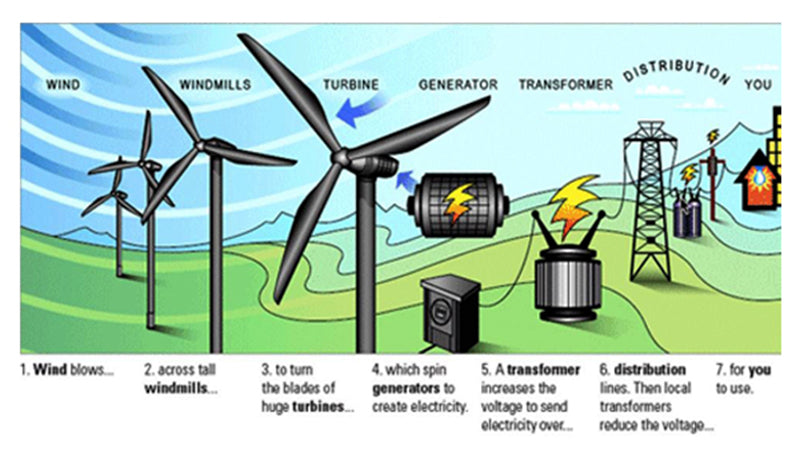
Spring is the transition season from winter to summer. Due to the continuous increase in surface temperature, the intensity of the Mongolian high pressure in the middle and high latitudes has weakened significantly since April. At this time, the Indian low pressure and the low pressure trough extending to the northeast have controlled the southern part of China. At the same time, the Pacific subtropical high has gradually invaded the coastal areas of South China from the Philippines to the north. The strength and ebb and flow of these high and low pressure systems all play an important role in China's wind energy resources.
In spring, these types of wind energy alternate frequently in China. Spring is the season with the most wind energy activities in China, especially in Northeast China and Inner Mongolia, which causes strong winds and sandstorms in Inner Mongolia and Northeast China. Similarly, there are more cyclone activities in the south of the Yangtze River, but it is the spring rain and the rainy season in South China. This is also one of the main reasons why wind energy resources in the Three Norths are more abundant than those in the South. The national wind direction is not as stable and less variable as in winter, but the northerly wind is still dominant, but the southerly component of the wind increases significantly.
The distribution of surface air pressure in the southeast in summer is completely opposite to that in winter. At this time, the Mongolian high pressure in the middle and high latitudes retreated to the north and it was no longer obvious. On the contrary, the Indian low pressure continued to develop and control the Asian continent, and it was the most prosperous monsoon wind energy in the country. The Pacific subtropical high also extended northward and westward in a single way at this time. It can be said that the weather and climate change of the East Asian continent in summer is basically constrained by the strength and interaction of these two circulation systems.
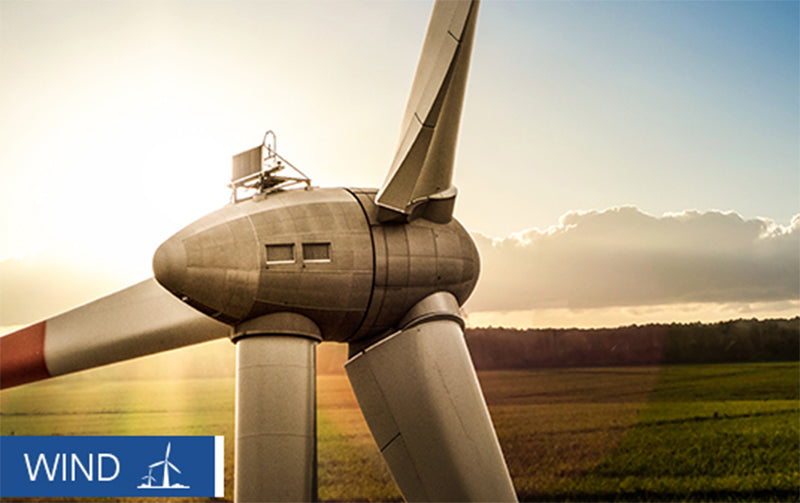
As the Pacific subtropical high extends westward and expands northward, eastern China can be affected by it. The west of this high pressure brings abundant precipitation to the southeast and southwest airflow, but the pressure difference between the high and low pressure is small, and the wind energy is not large. , summer is the season with the smallest wind energy in the whole year. In summer, there is a thermal low pressure on the mainland and a high pressure on the sea. The isobars between the high and low pressures are distributed in a north-south direction in eastern China, so the summer monsoon prevails in a southerly direction.
Autumn is the transition season from summer to winter, when the Indian low pressure and the Pacific high began to decline significantly, while the Mongolian high in the middle and high latitudes began to become active again. Winter winds can come quickly and remain stable. At this time, the southeastern coast of China has been gradually affected by the edge of the Mongolian high pressure, the southern coast of China has changed from the southeast wind energy in summer to the northeast wind energy, and the three northern regions have established the situation of winter wind energy in autumn. Most of the places are stable northerly wind energy, and wind energy begins to increase.
2. The southeast coast and its islands are rich in wind energy resources
The weather and climate background of its formation is basically the same as that of the Three North Regions, the difference is that the ocean and the continent are composed of two completely different substances, and there are obvious differences in the radiation and thermodynamic processes of the two. The energy exchange between continents and oceans is not the same, the ocean temperature changes slowly and has obvious thermal inertia, and the continental temperature changes rapidly and has obvious thermal sensitivity. The ocean is warmer than the mainland in winter and cooler in summer. In winter, when the wind energy reaches the sea, the wind energy increases, and the surface of the ocean is smooth and the friction force is small. Generally, the wind speed of wind energy is 2-4m/s faster than that of continental wind energy.
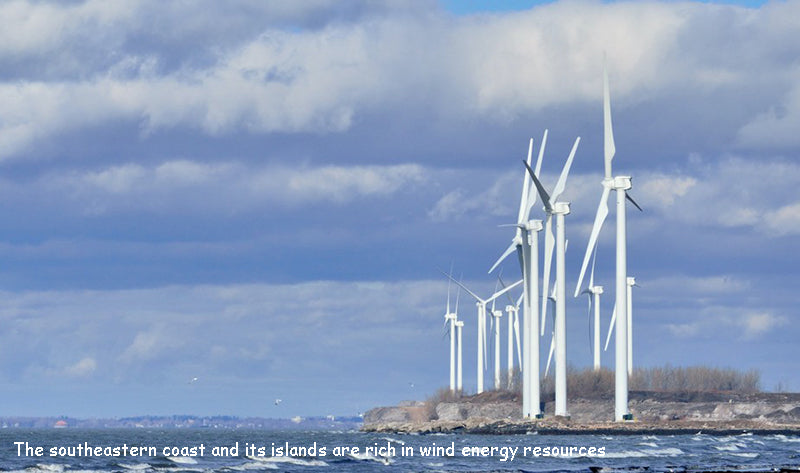
The southeast coast is also affected by the Taiwan Strait. Whenever the cold air arrives here, the wind energy increases due to the influence of the narrow tube effect, so it is the best area for wind energy resources. On the coast, both summer and autumn are affected by tropical cyclones. When the wind speed of a tropical cyclone reaches 8 or more, it is called a typhoon. A typhoon is a circular cyclone with a diameter of about 1000km and a very low central pressure. The eye of the typhoon is within 10~30km from the center of the typhoon. The weather in the eye of the typhoon is excellent and the wind energy is small. On the outer wall of the typhoon eye, the weather is the worst, and the most damaging wind energy occurs in this range. Therefore, as long as the typhoon does not directly land on the front of the area, the wind speed is generally less than 10, and its impact has an average diameter of 800~1000km. Whenever a typhoon makes landfall, a strong wind process occurs in the coastal areas, and the wind energy is basically within the range of the wind energy cut out by the wind turbine, so this is a good opportunity for full power generation
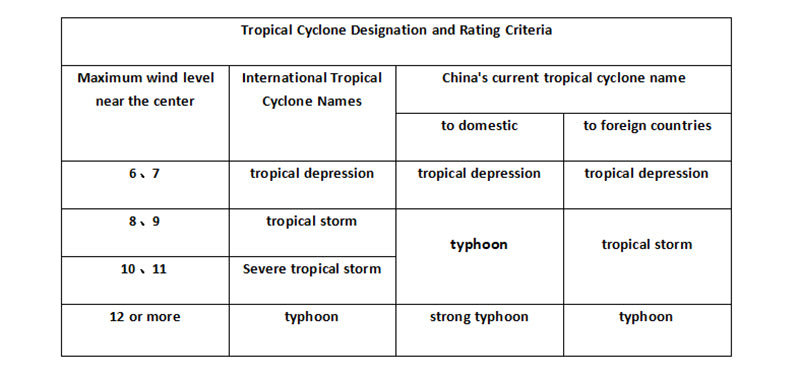
There are 11 landfall typhoons in China every year, while Guangdong has the most landfall typhoons every year, with 3.5 times, followed by Hainan with 2.1 times, Taiwan with 1.9 times, Fujian with 1.6 times, Guangxi, Zhejiang, Shanghai, Jiangsu, Shandong, Tianjin, The total of Liaoning and other places is only 1.7 times. It can be seen that the areas affected by typhoons decrease from south to north. Analysis of the iso-frequency line diagram for the number of passages from the Taiwan route shows that the coastal frequencies of the South China Sea and the East China Sea are much higher than those of the northern coast, and the wind energy resources are also larger in the south and smaller in the north. Due to the extremely rapid increase of the central pressure after the typhoon landed, and the overlapping of the northeast-southwest mountain ranges along the southeast coast, the formed strong wind is only within a few tens of kilometers from the coast, and the wind power density has dropped sharply from 300W/m2 to 100W/m2 the following.
To sum up, cold air in winter and spring and typhoons in summer and autumn can affect the coast and its islands. Relatively inland, a wind energy-rich belt is formed here. Due to the narrow tube effect of the Taiwan Gulf, the southeastern coast and its islands are the most abundant areas for wind energy. China's coastline is more than 18,000 kilometers, with more than 6,000 islands and vast offshore areas. This is an area with great prospects for development and utilization of wind energy.
3. Areas rich in inland wind energy resources
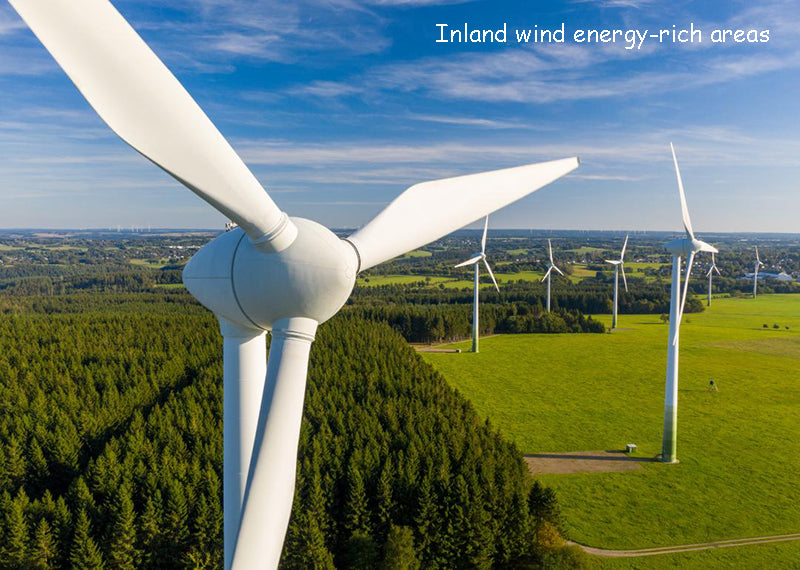
Outside the two wind energy rich belts, the power density of wind energy is generally small. However, in some areas, due to the influence of lakes and special topography, wind energy is relatively abundant. For example, the wind energy near Poyang Lake is larger than that in the surrounding areas. He Lichuan, Huangshan in Anhui, Taihua Mountain in Yunnan, etc. have more wind energy than flat land. But these are limited to a very small area, not as large as the two major belts.
The Qinghai-Tibet Plateau is above 4000m above sea level. The wind energy here is relatively large, but the air density is small. For example, the air density above 4000m above sea level is roughly 0.67 of the ground, that is to say, the wind speed is also 8m/s, and the wind energy power density on the plain is 313.6W/m2, but only 209.9W/m2 at an altitude of 4000m, so it is still a general area for wind energy utilization.
Read more: China's wind power technology research and development progress and development and application
















